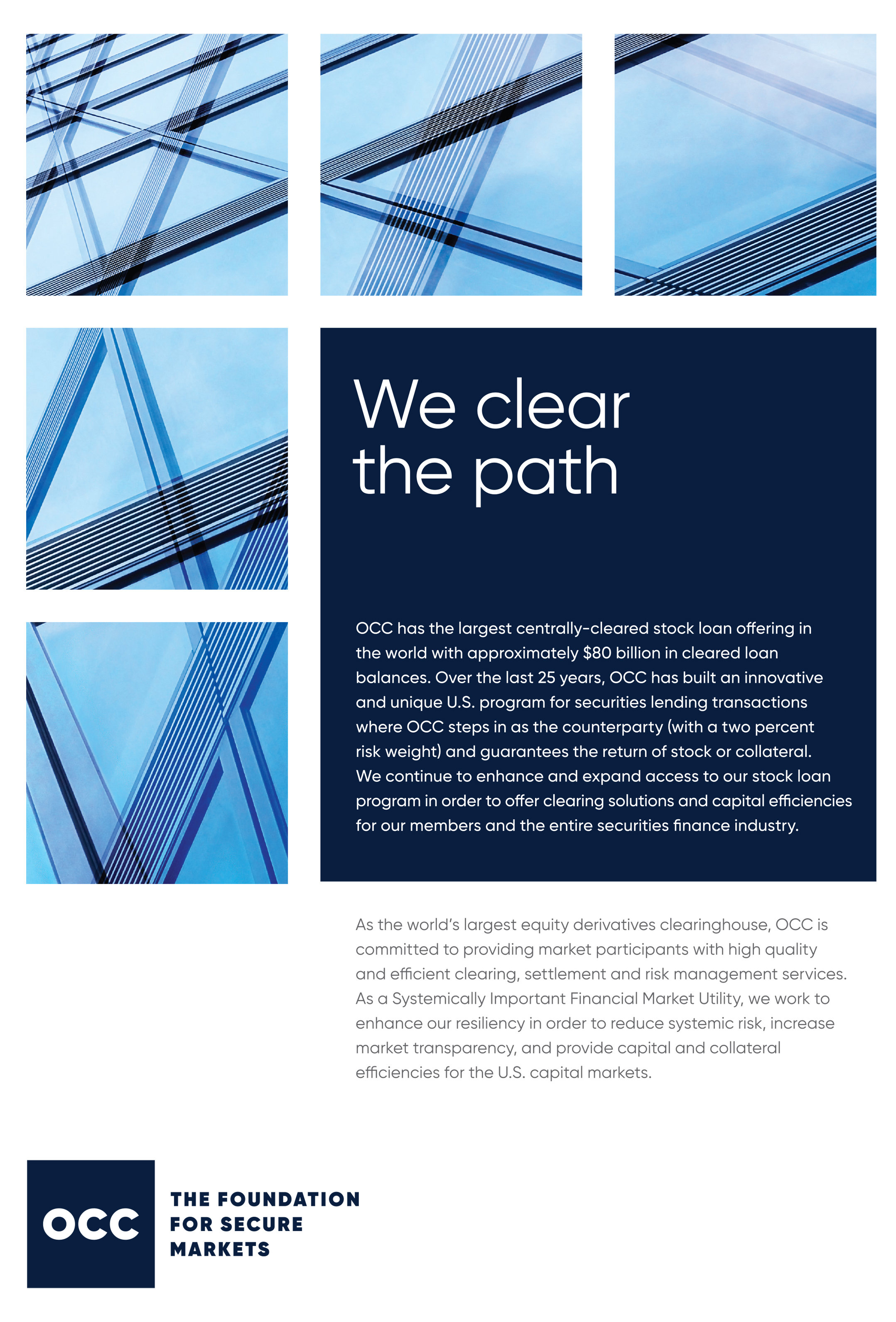The future of sec lending
16 April 2024
Tim Smith, managing director of data insights at Hazeltree, delves into how regulation is transforming the securities lending landscape and how technology plays a critical role in this evolution
 Image: stock.adobe/MiaStendal
Image: stock.adobe/MiaStendal
The world of securities lending has undergone a remarkable transformation in recent years and its evolution can be attributed to the need to better manage risk through stricter regulations.
The financial crisis of 2008 left an indelible mark on the global economy, reshaping perceptions of securities finance and short selling in the public consciousness. Despite the fact that the issues primarily stemmed from inadequately controlled collateral rather than inherent flaws in these practices, they were thrust into the spotlight, often unfairly associated with the crisis.
This heightened scrutiny spurred regulators worldwide to collaborate in monitoring these aspects of the financial industry. Recognising the interconnectedness of global markets and the need for robust oversight, regulators embarked on a concerted effort to ensure greater transparency and accountability within the securities finance and short-selling domains. This collective action aimed to mitigate systemic risks and restore trust in the financial system, marking a pivotal moment in regulatory cooperation and oversight.
Driving greater data transparency
One of the most significant shifts in securities lending has been the substantial increase in transparency. In the past, the term "transparency" was often met with scepticism, as market participants were more inclined to keep their activities opaque. The early days of securities lending were marked by a one-way approach, where firms sought to gain insight into their peers' actions while closely guarding their own. However, in the aftermath of the 2008 financial crisis, there was a growing realisation that this lack of transparency was detrimental to the market.
Recent years have seen significant progress in enhancing transparency in financial markets. One of the key developments has been the adoption of more open and candid dialogue between agent lenders and their institutional clients. This has allowed for greater visibility and a better understanding of the underlying risks and costs involved in securities lending transactions.
Additionally, the hedge fund industry and their prime brokers have become increasingly focused on achieving greater levels of transparency to effectively compare broker fees. This trend towards greater transparency has been driven, in part, by regulatory initiatives such as the Securities Financing Transactions Regulation (SFTR) in Europe and SEC regulations — such as 10c-1a — in the United States. These regulations have laid the foundation for a more open and transparent marketplace, benefiting both investors and market participants.
To achieve this high level of transparency, alternative asset managers require access to robust global securities lending market data, intraday data points, top long and short positions, sector and industry movers, as well as security rate changes. They also need to be able to compare prime broker rates against benchmarks by accessing not only the rate data, but also information around the costs of putting on synthetic transactions to mirror short-selling positions in markets that do not facilitate traditional short-selling activity.
The right regulation vs more regulation
The role of securities lending has transitioned from being a back-office settlement function to a front-office operation. This transformation has necessitated the establishment of front-office controls. Regulators have sought to apply rules from the derivatives market to securities lending, although such a blanket approach may not be entirely suitable.
Unlike a trade, securities lending is more of an arrangement, offering flexibility that regulations sometimes struggle to accommodate. The arrangement can be reevaluated, renegotiated, or even recalled, which adds a layer of complexity not typical in traditional trading. However, there is a collective understanding — or at least an admission — that more regulation is needed, provided it is tailored to the unique nature of securities lending. In other words, it should be the right regulation rather than more regulation.
It is important for alternative asset managers to implement the proper processes and systems to stay on top of regulatory changes and be sure they can comply with new rules regarding margin management, transparency and reporting.
Modernised systems
As the securities lending landscape has become more open to a growing number of counterparties, the importance of modern treasury management systems has surged. These systems are crucial for consolidating data related to cash, collateral, margin, securities finance and rates from all counterparties into a central platform. With the rise of complex operational and treasury demands, the days of relying on simple Excel spreadsheets are long gone.
In light of the recent challenges faced by banks, alternative asset managers are increasingly seeking to have a more comprehensive and timely view of their counterparty exposure. Evidently, they want to be able to quickly and accurately assess any potential risks associated with their counterparties, so that they can take appropriate action in a timely manner.
To achieve this, they are no longer content with waiting for periodic reports that may be outdated by the time they are received. Instead, they are looking for near real-time access to data, which can provide them with up-to-date information on their counterparties' financial health, creditworthiness and overall risk profile. The days of waiting for periodic reports are over; near real-time access to data is becoming the norm.
By having this kind of visibility, alternative asset managers can more effectively manage their counterparty risk and make informed decisions about how to allocate their investments. Ultimately, this can help them to improve their overall performance and deliver better results for their clients.
Disruption through technology
When looking at collateral management, an area where it is possible to achieve greater efficiency is in the mobility of the collateral itself. Distributed ledger technology (DLT) makes it possible to move assets 24/7, eliminating the typical afternoon rush to beat the Federal Reserve deadline.
Immutable proof of settlement is also visible to all participants using this technology, making the old process of chasing down Fed reference numbers obsolete. While many in the industry are not yet ready to use cryptocurrencies as collateral, there are alternative ways to leverage DLT and blockchain technology to achieve similar efficiency with collateral mobility.
Tokenising assets that are already generally accepted as eligible collateral, such as treasury securities or money market funds, can be a good entry point. This idea is gaining mainstream acceptance. The International Swaps and Derivatives Association (ISDA) has published papers that broach this topic, and the Depository Trust and Clearing Corporation (DTCC) recently completed the acquisition of Securrency, a company that focuses on tokenising assets on the blockchain.
While using tokenised digital assets for collateral mobility may appear to be the most immediate use for DLT and blockchain technology, it is certainly not the only conceivable use case. Dispute management is a process that injects the most inefficiency into the daily collateral process. An inordinate amount of time and effort is put into reconciling portfolios to find the root cause of differences.
Artificial intelligence can help to do this more quickly, and that is a good first step. But even when the breaks are automatically highlighted, there are still breaks. It is not a stretch to imagine firms using DLT and blockchain technology to define the contents of a portfolio of positions between parties, including contractual terms, such as independent amount. When the portfolio of positions on the blockchain is viewed as the single source of truth, reconciliation becomes obsolete.
On the sec lending horizon
In summary, the securities lending ecosystem has been dramatically altered by regulatory mandates. The demand for transparency has reshaped how participants interact with and exchange information. The industry has transitioned from a back-office function to a front-office operation, requiring more nuanced regulatory approaches.
Additionally, the growing number of counterparties necessitates modern treasury management systems to manage data effectively.
The securities lending industry is undergoing a transformation as market participants adapt to the changing landscape. The focus is on enhancing transparency, agility and technology to improve the efficiency and resilience of the industry.
To achieve this, lessons learned from the past are being used to guide current practices. Market participants are implementing robust technology solutions to streamline processes, improve risk management, and enhance operational efficiency.
Regulators are playing a key role in shaping the industry's future by enforcing proper regulations. The right regulations can help prevent past mistakes from recurring and ensure greater stability and transparency within the industry.
The future of securities lending looks promising, with greater resilience and efficiency on the horizon. As market participants and regulators work together to implement best practices, the industry will continue to evolve towards a more transparent, agile and technologically advanced future.
The financial crisis of 2008 left an indelible mark on the global economy, reshaping perceptions of securities finance and short selling in the public consciousness. Despite the fact that the issues primarily stemmed from inadequately controlled collateral rather than inherent flaws in these practices, they were thrust into the spotlight, often unfairly associated with the crisis.
This heightened scrutiny spurred regulators worldwide to collaborate in monitoring these aspects of the financial industry. Recognising the interconnectedness of global markets and the need for robust oversight, regulators embarked on a concerted effort to ensure greater transparency and accountability within the securities finance and short-selling domains. This collective action aimed to mitigate systemic risks and restore trust in the financial system, marking a pivotal moment in regulatory cooperation and oversight.
Driving greater data transparency
One of the most significant shifts in securities lending has been the substantial increase in transparency. In the past, the term "transparency" was often met with scepticism, as market participants were more inclined to keep their activities opaque. The early days of securities lending were marked by a one-way approach, where firms sought to gain insight into their peers' actions while closely guarding their own. However, in the aftermath of the 2008 financial crisis, there was a growing realisation that this lack of transparency was detrimental to the market.
Recent years have seen significant progress in enhancing transparency in financial markets. One of the key developments has been the adoption of more open and candid dialogue between agent lenders and their institutional clients. This has allowed for greater visibility and a better understanding of the underlying risks and costs involved in securities lending transactions.
Additionally, the hedge fund industry and their prime brokers have become increasingly focused on achieving greater levels of transparency to effectively compare broker fees. This trend towards greater transparency has been driven, in part, by regulatory initiatives such as the Securities Financing Transactions Regulation (SFTR) in Europe and SEC regulations — such as 10c-1a — in the United States. These regulations have laid the foundation for a more open and transparent marketplace, benefiting both investors and market participants.
To achieve this high level of transparency, alternative asset managers require access to robust global securities lending market data, intraday data points, top long and short positions, sector and industry movers, as well as security rate changes. They also need to be able to compare prime broker rates against benchmarks by accessing not only the rate data, but also information around the costs of putting on synthetic transactions to mirror short-selling positions in markets that do not facilitate traditional short-selling activity.
The right regulation vs more regulation
The role of securities lending has transitioned from being a back-office settlement function to a front-office operation. This transformation has necessitated the establishment of front-office controls. Regulators have sought to apply rules from the derivatives market to securities lending, although such a blanket approach may not be entirely suitable.
Unlike a trade, securities lending is more of an arrangement, offering flexibility that regulations sometimes struggle to accommodate. The arrangement can be reevaluated, renegotiated, or even recalled, which adds a layer of complexity not typical in traditional trading. However, there is a collective understanding — or at least an admission — that more regulation is needed, provided it is tailored to the unique nature of securities lending. In other words, it should be the right regulation rather than more regulation.
It is important for alternative asset managers to implement the proper processes and systems to stay on top of regulatory changes and be sure they can comply with new rules regarding margin management, transparency and reporting.
Modernised systems
As the securities lending landscape has become more open to a growing number of counterparties, the importance of modern treasury management systems has surged. These systems are crucial for consolidating data related to cash, collateral, margin, securities finance and rates from all counterparties into a central platform. With the rise of complex operational and treasury demands, the days of relying on simple Excel spreadsheets are long gone.
In light of the recent challenges faced by banks, alternative asset managers are increasingly seeking to have a more comprehensive and timely view of their counterparty exposure. Evidently, they want to be able to quickly and accurately assess any potential risks associated with their counterparties, so that they can take appropriate action in a timely manner.
To achieve this, they are no longer content with waiting for periodic reports that may be outdated by the time they are received. Instead, they are looking for near real-time access to data, which can provide them with up-to-date information on their counterparties' financial health, creditworthiness and overall risk profile. The days of waiting for periodic reports are over; near real-time access to data is becoming the norm.
By having this kind of visibility, alternative asset managers can more effectively manage their counterparty risk and make informed decisions about how to allocate their investments. Ultimately, this can help them to improve their overall performance and deliver better results for their clients.
Disruption through technology
When looking at collateral management, an area where it is possible to achieve greater efficiency is in the mobility of the collateral itself. Distributed ledger technology (DLT) makes it possible to move assets 24/7, eliminating the typical afternoon rush to beat the Federal Reserve deadline.
Immutable proof of settlement is also visible to all participants using this technology, making the old process of chasing down Fed reference numbers obsolete. While many in the industry are not yet ready to use cryptocurrencies as collateral, there are alternative ways to leverage DLT and blockchain technology to achieve similar efficiency with collateral mobility.
Tokenising assets that are already generally accepted as eligible collateral, such as treasury securities or money market funds, can be a good entry point. This idea is gaining mainstream acceptance. The International Swaps and Derivatives Association (ISDA) has published papers that broach this topic, and the Depository Trust and Clearing Corporation (DTCC) recently completed the acquisition of Securrency, a company that focuses on tokenising assets on the blockchain.
While using tokenised digital assets for collateral mobility may appear to be the most immediate use for DLT and blockchain technology, it is certainly not the only conceivable use case. Dispute management is a process that injects the most inefficiency into the daily collateral process. An inordinate amount of time and effort is put into reconciling portfolios to find the root cause of differences.
Artificial intelligence can help to do this more quickly, and that is a good first step. But even when the breaks are automatically highlighted, there are still breaks. It is not a stretch to imagine firms using DLT and blockchain technology to define the contents of a portfolio of positions between parties, including contractual terms, such as independent amount. When the portfolio of positions on the blockchain is viewed as the single source of truth, reconciliation becomes obsolete.
On the sec lending horizon
In summary, the securities lending ecosystem has been dramatically altered by regulatory mandates. The demand for transparency has reshaped how participants interact with and exchange information. The industry has transitioned from a back-office function to a front-office operation, requiring more nuanced regulatory approaches.
Additionally, the growing number of counterparties necessitates modern treasury management systems to manage data effectively.
The securities lending industry is undergoing a transformation as market participants adapt to the changing landscape. The focus is on enhancing transparency, agility and technology to improve the efficiency and resilience of the industry.
To achieve this, lessons learned from the past are being used to guide current practices. Market participants are implementing robust technology solutions to streamline processes, improve risk management, and enhance operational efficiency.
Regulators are playing a key role in shaping the industry's future by enforcing proper regulations. The right regulations can help prevent past mistakes from recurring and ensure greater stability and transparency within the industry.
The future of securities lending looks promising, with greater resilience and efficiency on the horizon. As market participants and regulators work together to implement best practices, the industry will continue to evolve towards a more transparent, agile and technologically advanced future.
NO FEE, NO RISK
100% ON RETURNS If you invest in only one securities finance news source this year, make sure it is your free subscription to Securities Finance Times
100% ON RETURNS If you invest in only one securities finance news source this year, make sure it is your free subscription to Securities Finance Times



